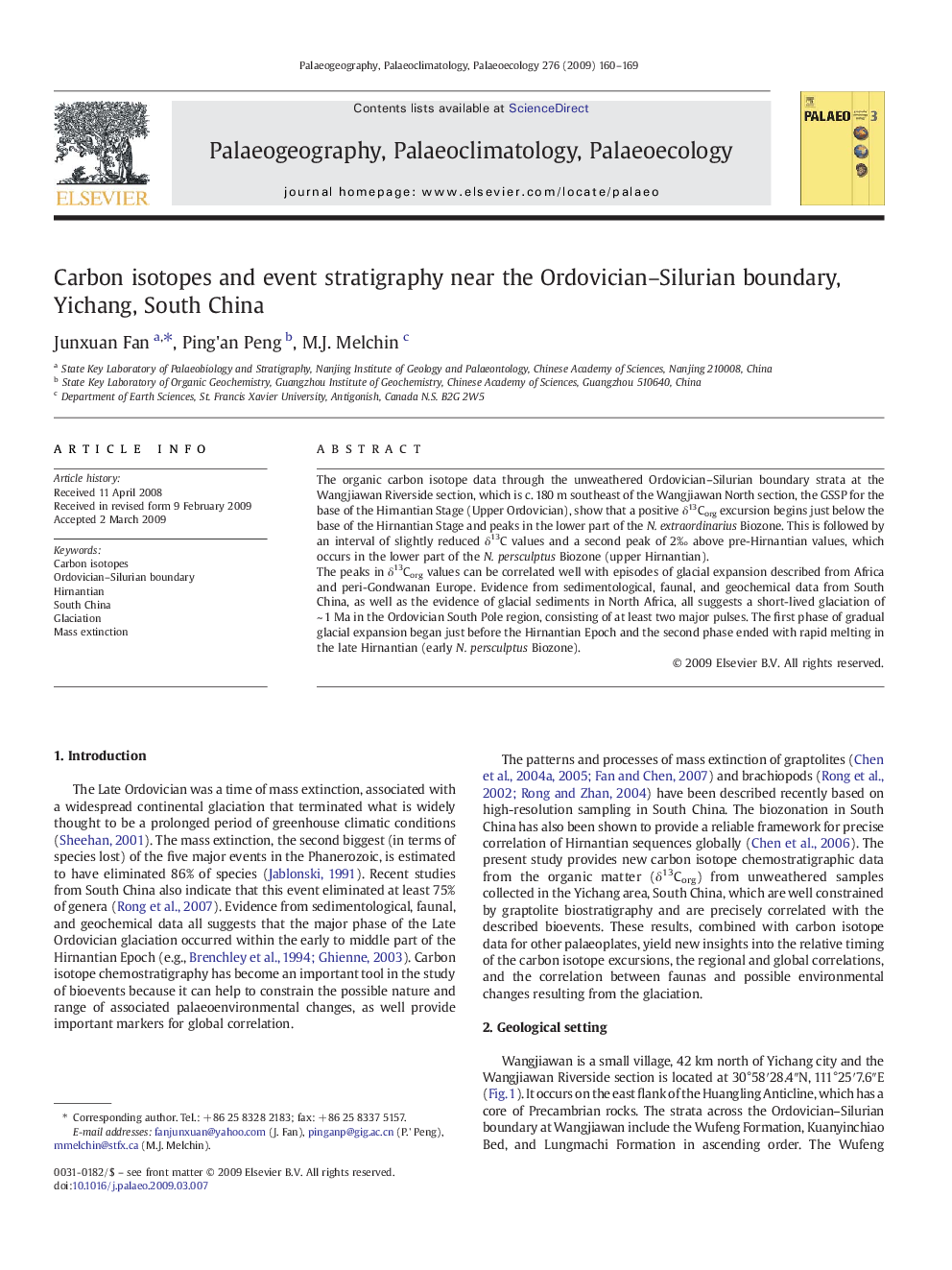| Article ID | Journal | Published Year | Pages | File Type |
|---|---|---|---|---|
| 4468222 | Palaeogeography, Palaeoclimatology, Palaeoecology | 2009 | 10 Pages |
The organic carbon isotope data through the unweathered Ordovician–Silurian boundary strata at the Wangjiawan Riverside section, which is c. 180 m southeast of the Wangjiawan North section, the GSSP for the base of the Hirnantian Stage (Upper Ordovician), show that a positive δ13Corg excursion begins just below the base of the Hirnantian Stage and peaks in the lower part of the N. extraordinarius Biozone. This is followed by an interval of slightly reduced δ13C values and a second peak of 2‰ above pre-Hirnantian values, which occurs in the lower part of the N. persculptus Biozone (upper Hirnantian).The peaks in δ13Corg values can be correlated well with episodes of glacial expansion described from Africa and peri-Gondwanan Europe. Evidence from sedimentological, faunal, and geochemical data from South China, as well as the evidence of glacial sediments in North Africa, all suggests a short-lived glaciation of ~ 1 Ma in the Ordovician South Pole region, consisting of at least two major pulses. The first phase of gradual glacial expansion began just before the Hirnantian Epoch and the second phase ended with rapid melting in the late Hirnantian (early N. persculptus Biozone).
